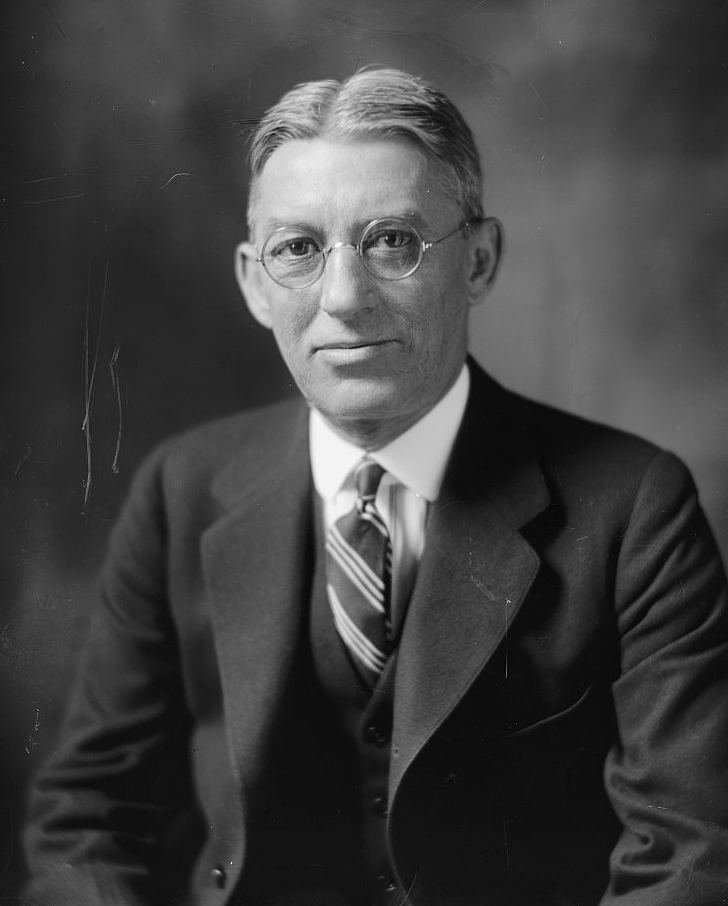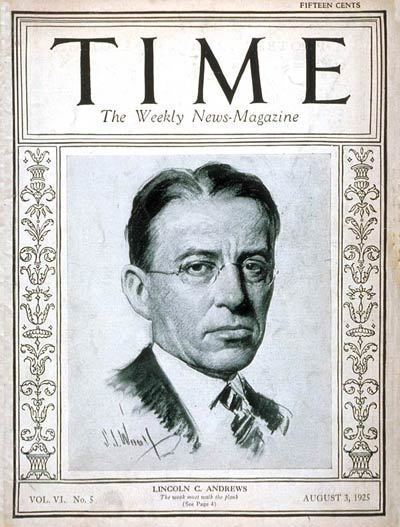Term 1925 to ? Name Lincoln Andrews | Died 1950 | |
 | ||
Titles United States Assistant Secretary of the Treasury Books Military Manpower: Psycholo, Fundamentals of military service, Leadership and Military Training, Manpower, Leadership and Military Training | ||
Lincoln Clark Andrews (1867–1950) was a brigadier general in the United States Army during World War I and Assistant Secretary of the Treasury starting in 1925. As Assistant Secretary of the Treasury, he was in charge of Prohibition enforcement. Time magazine called his forces the Prohibition Army.
Contents
- Early life
- Military career
- His publications
- Awards
- Civilian career
- Personal life
- Death and legacy
- References

Early life
He was born on November 21, 1867 to Charles T. Andrews and Mary Clark Andrews. He attended Cornell University from 1888 to 1889.
Military career
He attended the United States Military Academy, graduating number thirteen of fifty-one in 1893.
As a 2nd lieutenant, he commanded Troop G of the 3rd Cavalry.
With Troop G, he served during the Pullman Strike riots in Chicago in 1894.
During the Spanish–American War, he served as an aide to Gen. Edwin Vose Sumner, the Commanding General of the cavalry division.
He was briefly an instructor of physics at the United States Military Academy.
From 1899 to 1903, he served in the Philippines as governor of the island of Leyte and participated in the campaign against the Moros.
He returned to the United States Military Academy in 1903 to teach cavalry tactics. From 1911 to 1915, he taught cavalry tactics for the New York National Guard and also at the training camp near Plattsburgh, New York.
Between 1916 and 1917, he trained the Philippine National Guard Division.
He was promoted to lieutenant colonel on June 28, 1917.
He served as a brigadier general of the 172nd Infantry Brigade, 86th Division at Camp Grant, Illinois. He took this brigade to France in August 1918.
After the armistice, he served as deputy provost marshal general at general headquarters until it was disbanded.
He retired at his own request after 30 years of service on September 30, 1919. His rank of brigadier general was restored by act on Congress in June 1930.
His publications
Awards
Civilian career
Andrews held the office Assistant Secretary of the Treasury after Roy Asa Haynes. He reorganized the bureau in 1925, resulting in the layoffs of numerous agents, including Izzy Einstein and Moe Smith in New York, who were nationally the most successful and famous team. Andrews saw Prohibition enforcement as a technical challenge and was not an ideological adherent to the dry movement. Andrews served until August 1, 1927.
From Nov. 1, 1927 to June 1928, he was the president of Guardian Investment Trust in Hartford, Connecticut.
In June 1928, he became president of the Rubber Institute.
Personal life
He married Charlotte Graves on October 5, 1899. They had one son: John G. Andrews.
He lived in Grand Isle, Vermont.
Death and legacy
He died on November 23, 1950 in Northampton, Massachusetts. He is buried in Logan Cemetery, Hector, New York.
